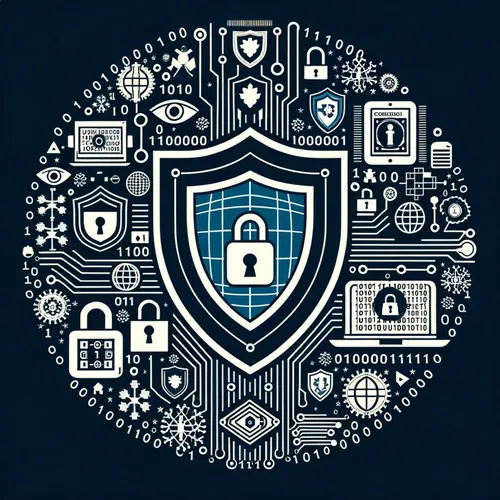Psst! China's Cyber Ninjas Strike Again: Volt & Salt Typhoons Unleashed! U.S. Plays Defense
- Author
- Quiet. Please
- Published
- Tue 20 May 2025
- Episode Link
- https://www.spreaker.com/episode/psst-china-s-cyber-ninjas-strike-again-volt-salt-typhoons-unleashed-u-s-plays-defense--66174850
This is your Tech Shield: US vs China Updates podcast.
Alright, buckle up, because this week’s scoop on the U.S.-China cyber clash is hotter than a zero-day exploit on an unpatched server. I’m Ting, your go-to geek for all things China, cyber, and hacking — and I’m here to break down the latest in the ongoing digital shadow war.
First off, let’s talk about the big picture. The Cybersecurity & Infrastructure Security Agency (CISA), led by the formidable Bridget Bean, just gave us a front-row seat into the Chinese threat landscape at the Potomac Officers Club’s 2025 Cyber Summit on May 15. Bean didn’t hold back—China remains the most persistent, sophisticated cyber adversary targeting U.S. federal systems, private sectors, and critical infrastructure. The U.S. Office of the Director of National Intelligence (ODNI) concurs: Chinese operations range from espionage to outright strategic manipulation, with cyber campaigns designed to weaken U.S. defense and economy alike.
Two code-named threats stole the spotlight—Volt Typhoon and Salt Typhoon. Volt Typhoon is the nastier sibling, an ongoing Chinese campaign where hackers infiltrate critical infrastructure, dwelling stealthily—for example, in the U.S. electric grid for a staggering 300 days in 2023—waiting for the right moment to trigger chaos or spy. This campaign’s admitted by China during a secret Geneva summit last December, where the American delegation got an eyebrow-raising confession: these attacks are Beijing’s warning against U.S. support for Taiwan. The Salt Typhoon campaign, meanwhile, recently compromised U.S. telecom infrastructure. Think of it as China saying, “We’re watching your comms”—and the message couldn’t be clearer.
The U.S. government isn’t just sitting on its hands. New protection measures are being rolled out, including vulnerability patches for those very zero-days exploited by Volt Typhoon’s hackers. There’s a bipartisan bill reintroduced by House Republicans targeting Chinese cyber threats to critical U.S. infrastructure. This bill mandates stringent assessments and mitigation plans specifically focused on China-origin threats, recognizing that our current defenses need serious beefing up.
Industry response? The cybersecurity sector has doubled down on innovation, leveraging AI-driven anomaly detection and next-gen threat intelligence tools to sniff out stealthy intrusions earlier. Yet, experts like Bridget Bean emphasize the gaps: “While we’ve made strides, the sophistication and persistence of Chinese actors mean we can never be complacent.”
Congressional warnings have taken a sharper tone this week, too. A recent panel bluntly stated the U.S. is losing ground in this cyber war—highlighting that without a pivot to more aggressive offensive cyber capabilities and improved collaboration across government and private sectors, we risk falling behind.
To sum it up, what we’re seeing is a cat-and-mouse game on digital steroids. China’s cyber warriors continue probing, infiltrating, and lurking within U.S. systems, while stateside agencies and defenders patch vulnerabilities, legislate safeguards, and roll out new tech shields. The fight isn’t just about defense anymore—it’s a chess match demanding deft offense and smarter, faster intelligence.
So, what’s the takeaway? America needs to sharpen both its defensive armor and offensive jabs—and do it fast. Otherwise, as the congressional panel warns, we might just find ourselves outmaneuvered in this high-stakes cyber arena. And given the stakes—spying, infrastructure sabotage, and geopolitical brinkmanship—we all better stay wired in.
That’s your update from Ting, keeping you cyber-savvy one byte at a time.
For more http://www.quietplease.ai
Get the best deals
